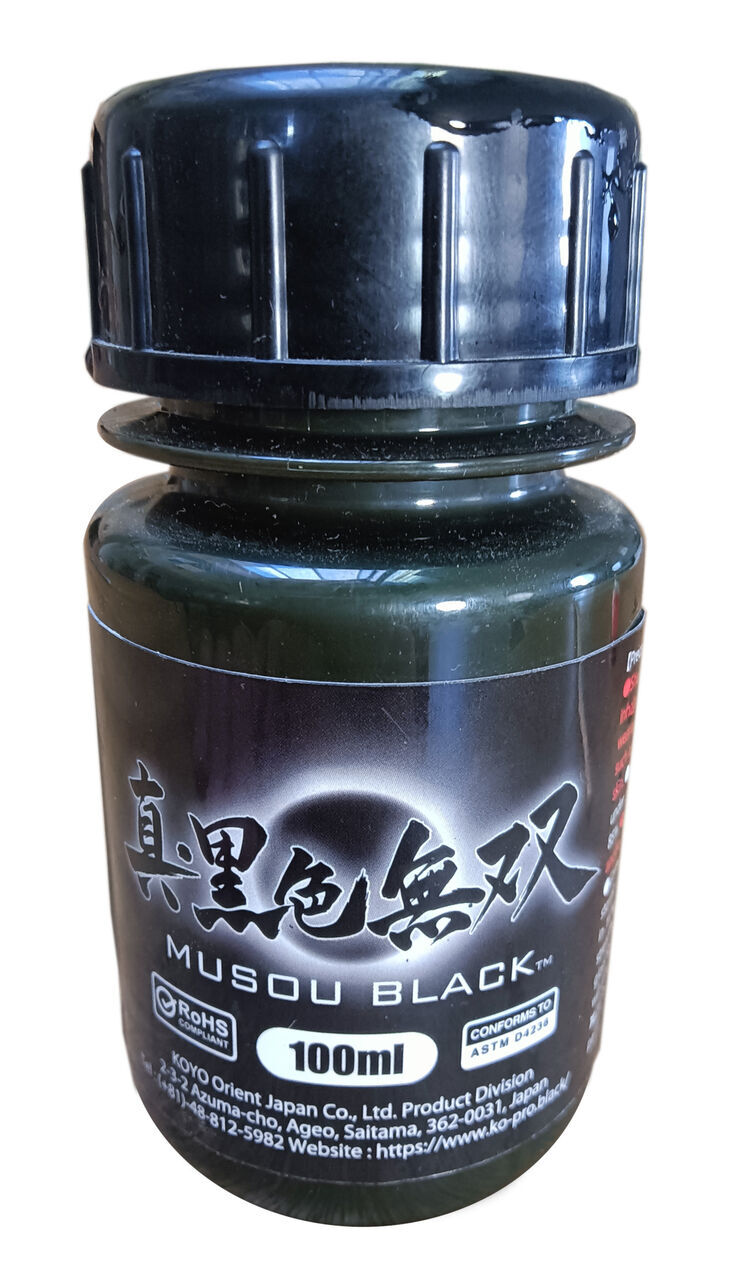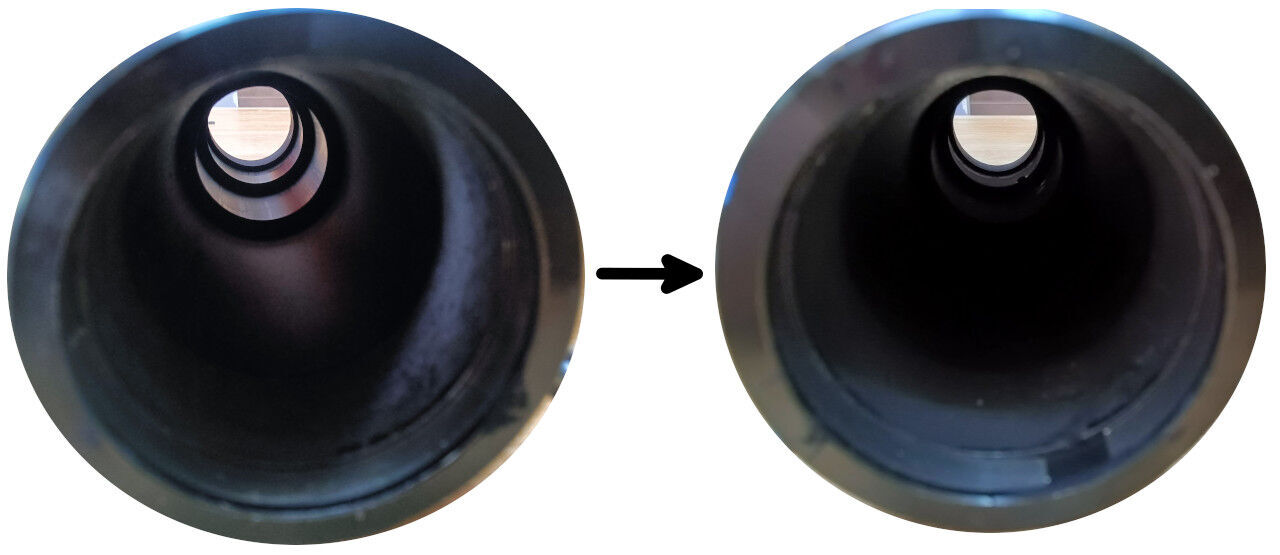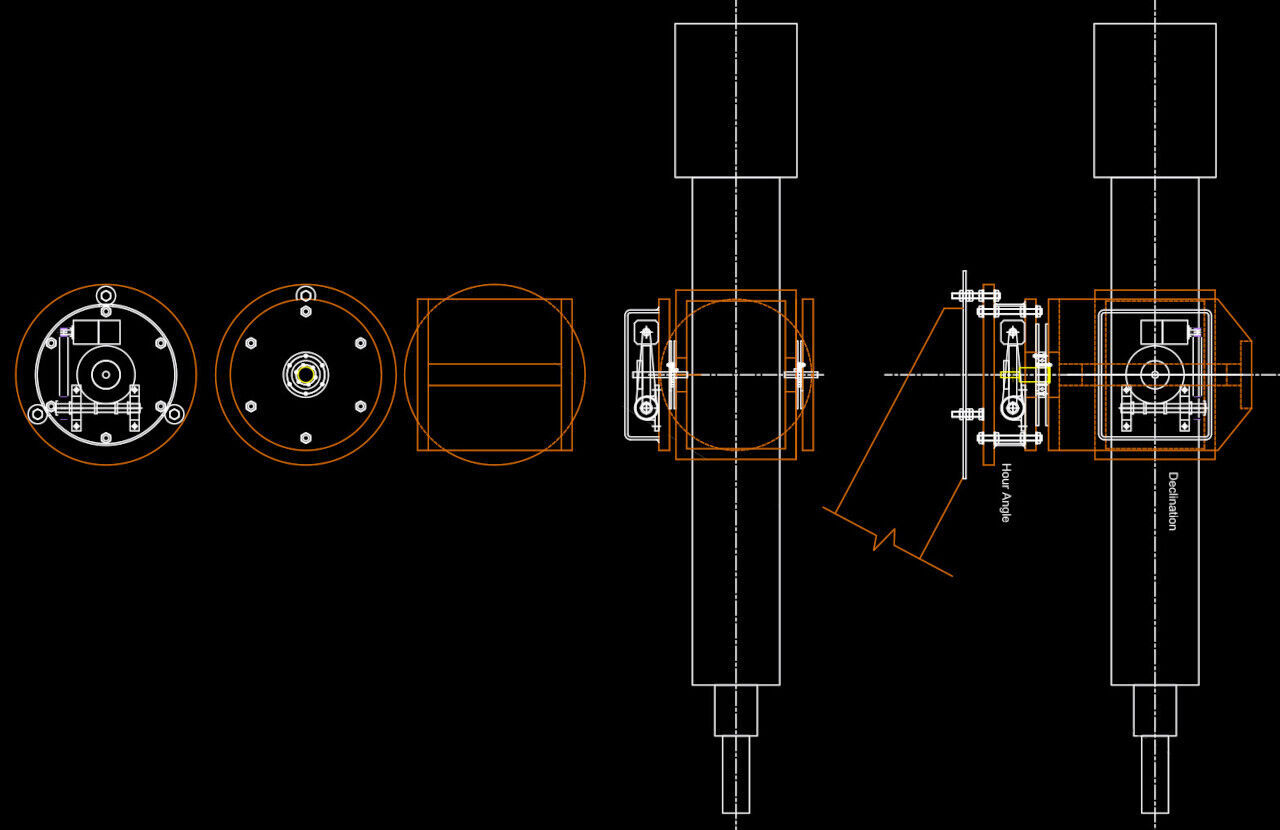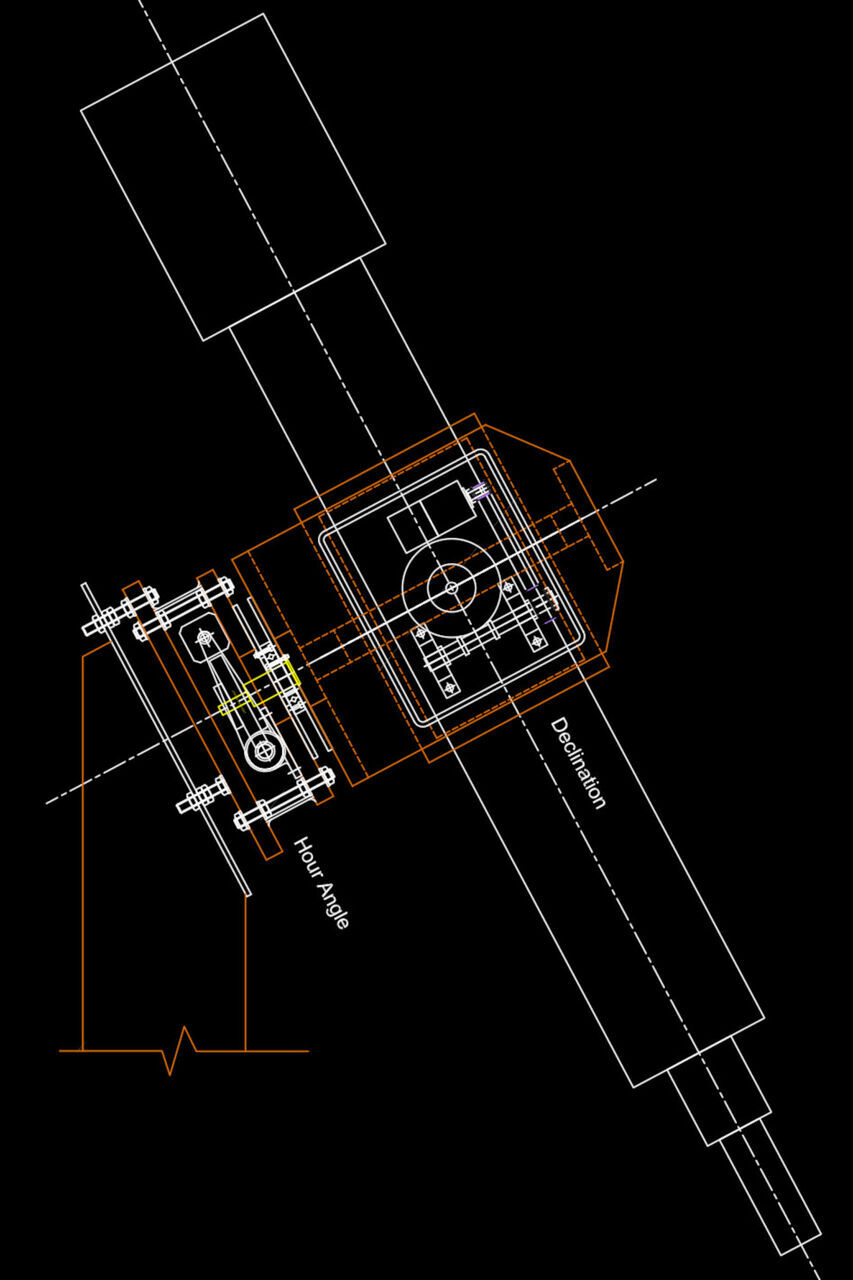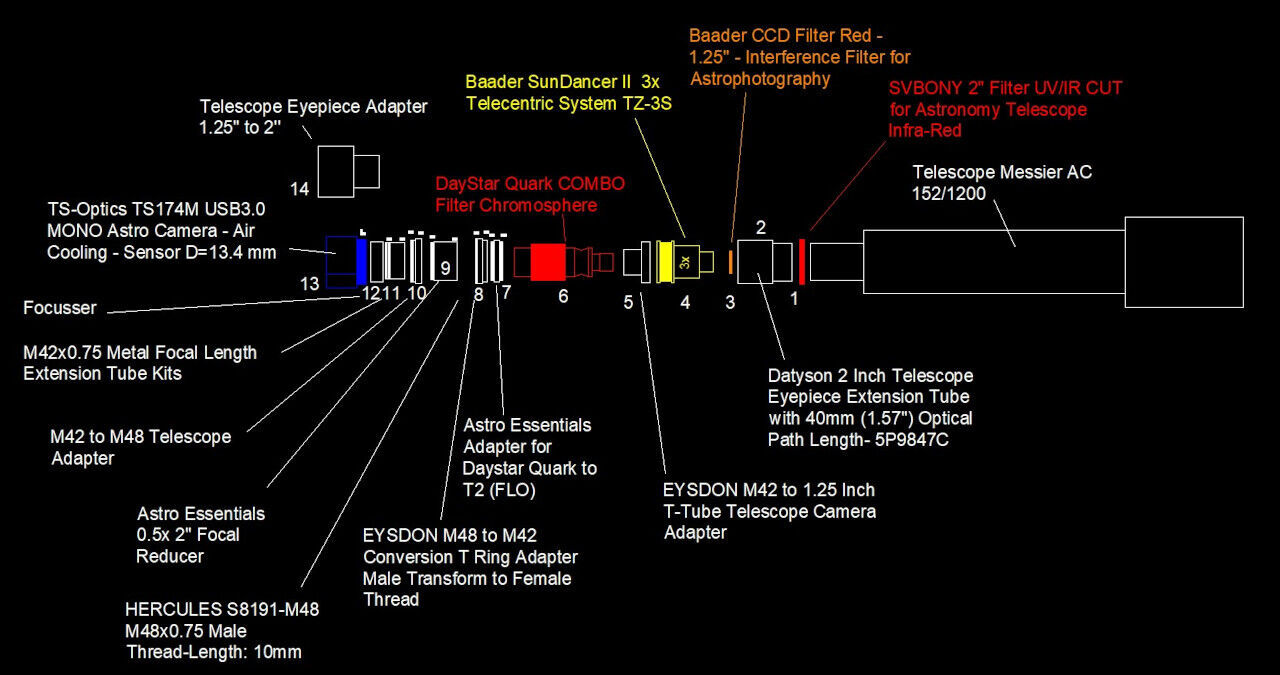Notice
Never look directly at the Sun with the naked eye or with any optical device without a filter specifically designed for this purpose, such as binoculars or a telescope. Even a brief flash of sunlight, especially under magnification, can cause serious eye damage.
In the following, we describe some tools we use for solar observing but do not go into detail and should this NOT be used to make your own telescope and filter settings.
The telescope
We used a telescope with an aperture of 152 mm and a focal length of 1200 mm. Observing the sun with such an aperture is really unusual because of the need to get almost perfectly parallel light rays through the H-apha filter. It is a bit technical and we will be happy to explain it to you. In short, the sun is usually observed with very small aperture telescopes, i.e. with small lenses of mirror, because these telescopes work well with the filter that allows observation. However, at Astro-Sun we know that a small aperture is always synonymous with low image quality, so we have opted for a rather large telescope, adapting filters and special lenses to achieve high quality photographs of the sun. In short, we make an effort so that you can enjoy an unforgettable experience.
|
The sun's rays are very powerful and easily reflect off the walls of the telescope shortly before they reach the lens or the camera. To avoid this, we have coated the inside of the eyepiece holder with an extremely "black" paint. We used Musou paint, known to be one of the blackest paints in the world. This paint reflects very little light. |
|
A usual black paint looks grey in comparison to Musou paint.
The inside of the eyepiece holder was painted with a low quality paint that reflected a lot of light. By painting it with Musou paint, the results are immediate.
The AstroSolar film
The AstroSolar film is used for observing the sun (not for taking photographs). It is placed in full aperture, i.e. in front of the telescope. It is the first thing that the sunlight passes through, before it passes through the first lens of the telescope. This film transmits only a fraction of a hundred thousand of the sun's light, and in particular prevents 100% of ultraviolet (UV) and infrared (IR) rays from passing through.
It sounds great, but let's be honest. This filter has a wide bandwidth in the visible spectrum, i.e. it does not filter out a certain wavelength. The result is that it is ideal for observing the sun, but you won't see much detail either. You will only see the perfect sphere of the sun with its typical black spots.
It is an interesting didactic tool, but using a different kind of filter and a camera, we want to reach much more.


